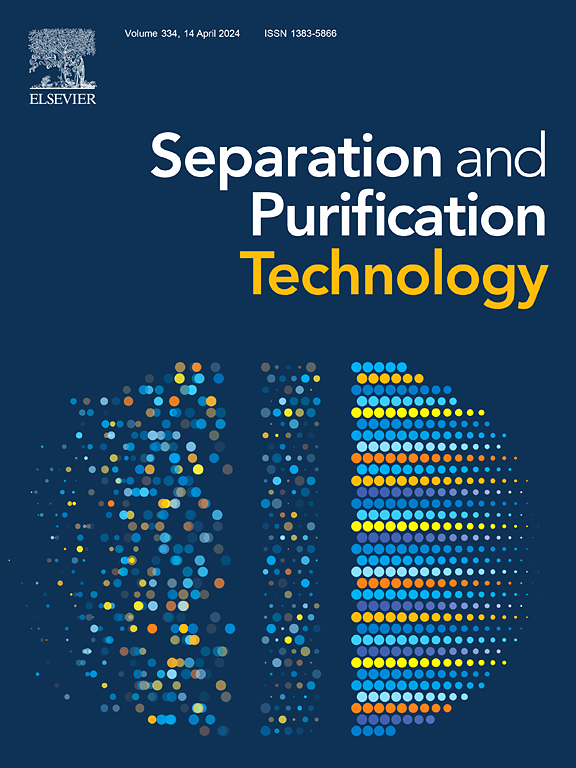Selective extraction and complexation of trivalent actinide and lanthanide by tetradentate N,O-Hybrid phenanthroline derived ligands
IF 8.1
1区 工程技术
Q1 ENGINEERING, CHEMICAL
引用次数: 0
Abstract
Phenanthroline derived diamide ligand featured with N- and O-donors is one of promising extractants for the selective separation of trivalent actinides (An) over lanthanides (Ln). In the present work, three representative isopropyl (L1), 2,6-dimethylpiperidin-1-yl (L2) and morpholino (L3) grafting 2,9-diamide-1,10-phenanthroline (DAPhen) ligands were synthesized and the application in solvent extraction of trivalent americium (Am) and europium (Eu) in an ionic liquid (IL), C4mimNTf2, was probed. Slope analysis suggests the 2:1 ligand/metal complex as the dominant species in the case of extracting Am(III). While both 2:1 and 1:1 complexes are generated during the extraction of Eu(III). The relationships between molecular structures and extraction behaviors are elucidated involving electric and steric effects. Meanwhile, complexation studies in combination with absorption spectrophotometry, luminescence spectrophotometry, 1H NMR spectrometry and single crystal X-ray diffraction as well as theoretical analyses further elaborate the extraction mechanisms. This study uncovers more in-depth experimental insights into the design of more efficient DAPhen ligands for Am(III)/Ln(III) separation.

求助全文
约1分钟内获得全文
求助全文
来源期刊

Separation and Purification Technology
工程技术-工程:化工
CiteScore
14.00
自引率
12.80%
发文量
2347
审稿时长
43 days
期刊介绍:
Separation and Purification Technology is a premier journal committed to sharing innovative methods for separation and purification in chemical and environmental engineering, encompassing both homogeneous solutions and heterogeneous mixtures. Our scope includes the separation and/or purification of liquids, vapors, and gases, as well as carbon capture and separation techniques. However, it's important to note that methods solely intended for analytical purposes are not within the scope of the journal. Additionally, disciplines such as soil science, polymer science, and metallurgy fall outside the purview of Separation and Purification Technology. Join us in advancing the field of separation and purification methods for sustainable solutions in chemical and environmental engineering.
 求助内容:
求助内容: 应助结果提醒方式:
应助结果提醒方式:


